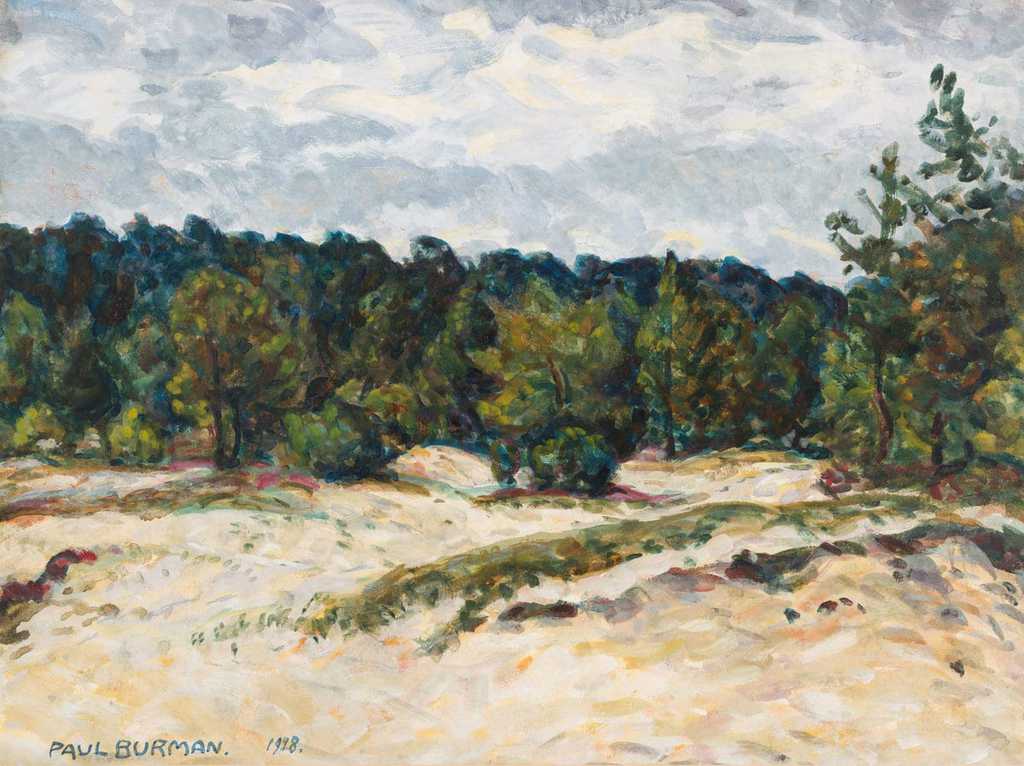
Burman practically did not work at all in 1920-1922 according to the notes of his physician. The joy of creation reportedly cropped up in him only thereafter, which was also reflected in his colours becoming brighter. At the same time, moods of sadness also become much more prominent now. Burman started to prefer autumn and winter motifs as his subjects. His depictions of the sky included more clouds. He also started using the colour black for the first time.
The year 1928, however, is a period where Paul Burman’s creative work livens up. All at once, he started dating his works, which Burman generally did not do, and he once again painted quite extensively. His colours became lighter and brighter again and his subjects became simpler.
It has been speculated that Paul Burman did not entirely understand the details of his stay in the hospital for treatment and that his works completed in the hospital are therefore frequently in milder tones. The hospital was situated in a natural park and beyond the park were fields of grain and pastures with woods further in the distance, which and where Burman often painted and which "Cloudy Day" also apparently depicts. "Burman left home with his painter’s case and plywood boards or pasteboards and when he had found a suitable place to sit, either on a rock or a stump, he got down to work," wrote a researcher of Burman’s creative work. He worked very quickly and intensely, and as a rule, he did not finish his works in the studio. For instance, recollections indicate that a quarter of an hour to an hour was enough for Burman to complete a painting.